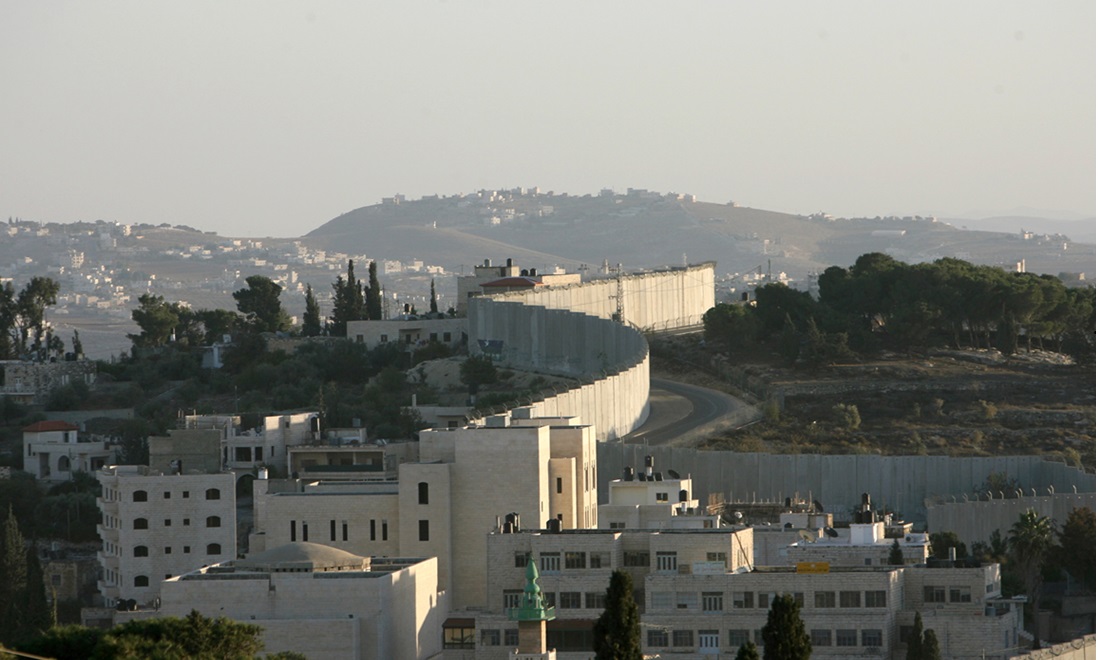The horrors of October 7 are still fresh: we are all still deeply immersed in the war and the disaster, a ceasefire has not been reached, the hostages have not yet returned and the humanitarian crisis in Gaza is escalating quickly. In such a situation, any talk of a political resolution to the conflict is deemed either inappropriate or outright delusional. The prevailing sentiment in Israel is that there’s no way out of this conflict: not only is it not possible to, but that it also must not be resolved. Israel must achieve ultimate victory and the Palestinans must accept their ultimate defeat.
Despite these perceptions however, many, including former senior officials in Israel’s security establishment, recognize Israel’s limitations of power and emphasize that only a political resolution between Israelis and Palestinians can guarantee a secure future for Israel. This position is reinforced by recent studies on violent conflicts which indicate that political stability and security are only achieved by political resolutions. Even in instances where unilateral military dominance was achieved, such as in Sri Lanka or in the occupied territories following the Second Intifada — those military victories were at best temporary. Without a political resolution that addresses the root problems, there is a high chance of recurring and even escalating violence. That is precisely the cycle of violence and destruction that we find ourselves in, that is seemingly without end: violent repression, violent uprising, and the cycle repeats itself.
Therefore, those who have Israel’s best interests at heart and wish to adopt a pragmatic approach, sooner or later must come to the conclusion that it is incumbent upon them to support a political resolution between us and the Palestinians, first and foremost by supporting the establishment of an independent and viable Palestinian state alongside the State of Israel. The difficult question is, of course, what is the realistic political framework for dividing the land into two states. This is a central question that is not addressed even in contemporary policy plans, including the Biden plan and the “Israeli initiative“.
Among Israeli proponents of a political resolution, a particular notion has been established whereby such a resolution must entail separation between Israel and Palestine and Israeli dominance over Palestinians. As Yair Lapid recently stated in a Haaretz podcast, Israel must advance the centrist version that advocates for “separation stemming from strength. Separation that consists of a power advantage in our favor, that creates two political entities that are not equal in power, or in value. One is a demilitarized Palestinian state, that is small and dependent on us, and [the other is] a strong Israel that has regained its self-confidence. It’s a process.”
Without a political resolution that addresses the root problems, there is a high chance of recurring and even escalating violence. That is precisely the cycle of violence and destruction that we find ourselves in, that is seemingly without end: violent repression, violent uprising, and the cycle repeats itself.
However, this approach, though presented as novel, is precisely the same concept that has historically shaped our relations with the Palestinians and underpinned the Oslo Accords. The phrase “we are here and they are there,” that Ehud Barak adopted in his 1999 campaign for Prime Minister, and the assumption that “good fences make good neighbors” — both succinctly encapsulate the logic of the two-state model that is based on separation. The goal of consolidating Israeli supremacy is not new either. It has characterized Israel’s attitude towards Palestinian citizens of Israel as well as Palestinians in Jerusalem, the West Bank, and Gaza since 1967. It is also characteristic of the Oslo Accords, which generally reinforced and consolidated this power imbalance.
Practically speaking, the separation approach includes two preconditions that are necessary for a political resolution: the removal of Israeli settlers who would remain on the Palestinian side of the newly drawn border and a physical division of Jerusalem. The argument that the separation of rival ethno-national groups solves the “security dilemma” is arguably based on a “realistic approach”. The argument asserts that the intense enmity and distrust in such conflicts make them practically insoluble without demographic distinction. The expectation is that once the parties are in separate countries, they will be better positioned to defend themselves, thus reducing the risk of renewed violence. The images of the October 7 massacre and the ongoing war in Gaza have only deepened existing fears and mistrust, reinforcing the logic of demographic separation.
However, such a two-state solution suffers from three serious problems.
The first problem is that complete separation is not possible, since Jewish-Israelis and Arab-Palestinians live next to each other not only in the West Bank but also within Jerusalem and throughout Israel within the 1948 borders. In Jerusalem, complete separation and a hard division of the city where Jews and Palestinians live in close proximity and daily interaction — especially in the areas that were annexed to Jerusalem after 1967 — would constitute an almost impossible and most definitely destructive engineering of urban life, socially as well as economically. In Israel proper, Israeli-Jews live alongside two million Arab citizens of Israel, many of whom identify as Palestinians. Do the supporters of a policy of separation believe that separation is necessary here as well? And if they do not, what might be the security explanation for the different categorical treatment?
Furthermore, partial separation involving the removal of the Jewish population from the West Bank also seems politically unfeasible, challenging on a human level and likely to lead to political instability. Current estimates suggest that between 115,000 and 175,000 Israeli settlers reside outside the “settlement blocs” that could potentially be annexed to Israel in a territorial swap. It’s hard to imagine an Israeli government capable of deciding and implementing such a forced evacuation. Even if such a decision were to be made, it would likely provoke widespread, even violent opposition, undermining internal political stability. Additionally, in the age of human rights, and despite the legal consensus that the settlements violate international law, the forced evacuation of long-term residents, some of which were born in settlements, might constitute the violation of their rights, especially if it is an imposed and blanket eviction.
Given that justifications for the separation approach rely on security concerns, it is worth mentioning a recent study that found that separation may have a moderating effect only if it is complete. Partial separation could exacerbate the risk of violence. This study supports the claim that the risk of violence mainly arises from the existence of a foreign rule and domination, and that reducing this risk requires ending the foreign ethnic control, whether by means of complete separation or conversely through political inclusion and power-sharing.
The second problem is the internal contradiction of this approach. The demand to remove settlers from the Palestinian state and to firmly divide Jerusalem, stem from a lack of trust in the Palestinians and in the ability of a new political entity to protect Israeli residents, to treat them with respect and to enforce law and order sufficiently. Given this lack of trust, how can the safety of Israeli citizens living within the state of Israel be assured when this entity is adjacent to major Israeli roads, population centers, and within firing range of Ben-Gurion Airport? Is it surprising then, that the Israeli public remains unconvinced of a prospect for peace? especially since October 7th that Israelis are in a state of unprecedented insecurity and anxiety. Ironically though, the concept of separation and its promotion by liberal forces in Israeli society, continue to reinforce the fear and mistrust between Israelis and Palestinians. Additionally, insisting on a wholesale evacuation of settlers is expected to intensify the already-high tensions surrounding the status of Palestinian citizens of Israel.
If any proof was needed that high fences don’t make good neighbors, the events of October 7th were the final draw. We must disillusion ourselves from the illusion of separation.
The third problem is that the focus on separation diverts our attention from the fact that the most effective way to reduce the risk of violent conflict is by ending the foreign rule and domination of another people. While complete separation might seemingly reduce the risk of violent conflict (though, as we have argued, such separation is impossible), the reduction of violence can be more effectively achieved by ending foreign rule and domination, meaning, liberating the Palestinians from Israeli occupation and dominance and transitioning toward governance structures that represent the entirety of the civilian population in both states.
A stable political order between peoples living in such close proximity, as Israelis and Palestinians do, depends on the establishment of an independent and viable Palestinian state, as well as fostering trust and good neighborly relations between the peoples and the countries. If any proof was needed that high fences don’t make good neighbors, the events of October 7th were the final draw. We must disillusion ourselves from the illusion of separation, not only because it sets an unattainable goal, but because such an illusion is predicated on an internal paradox which reinforces harmful narratives that erode the foundations required for a political resolution and internal political stability in Israel. Given that separation is not viable, nor is it just — it is necessary that we adopt a new approach that is not based on the illusion of separation.
Instead of the approach of separation and supremacy that has dominated attempts at a peace agreement for the last thirty years, we must develop a pragmatic and research-based approach. Such an approach should focus on abolishing foreign control and unequal power relations, whilst pursuing collective equality and fair partnership between the peoples and countries. Instead of walls, the two-state solution should involve advanced cooperative arrangements. The accepted political model for this would be a two-states confederation, as proposed by “A Land for All initiative: two states, one homeland.” Indeed, arriving at two states in a confederation poses various challenges, but appropriate responses must be developed. Therefore, it is crucial that supporters of a political resolution re-examine their assumptions to avoid paving the way for the next peace-process failure, inadvertently aiding extremists who aim to chain us once more to concepts of “conflict management” or “decisive military victory,” which in practice sentence us to never-ending war.

















